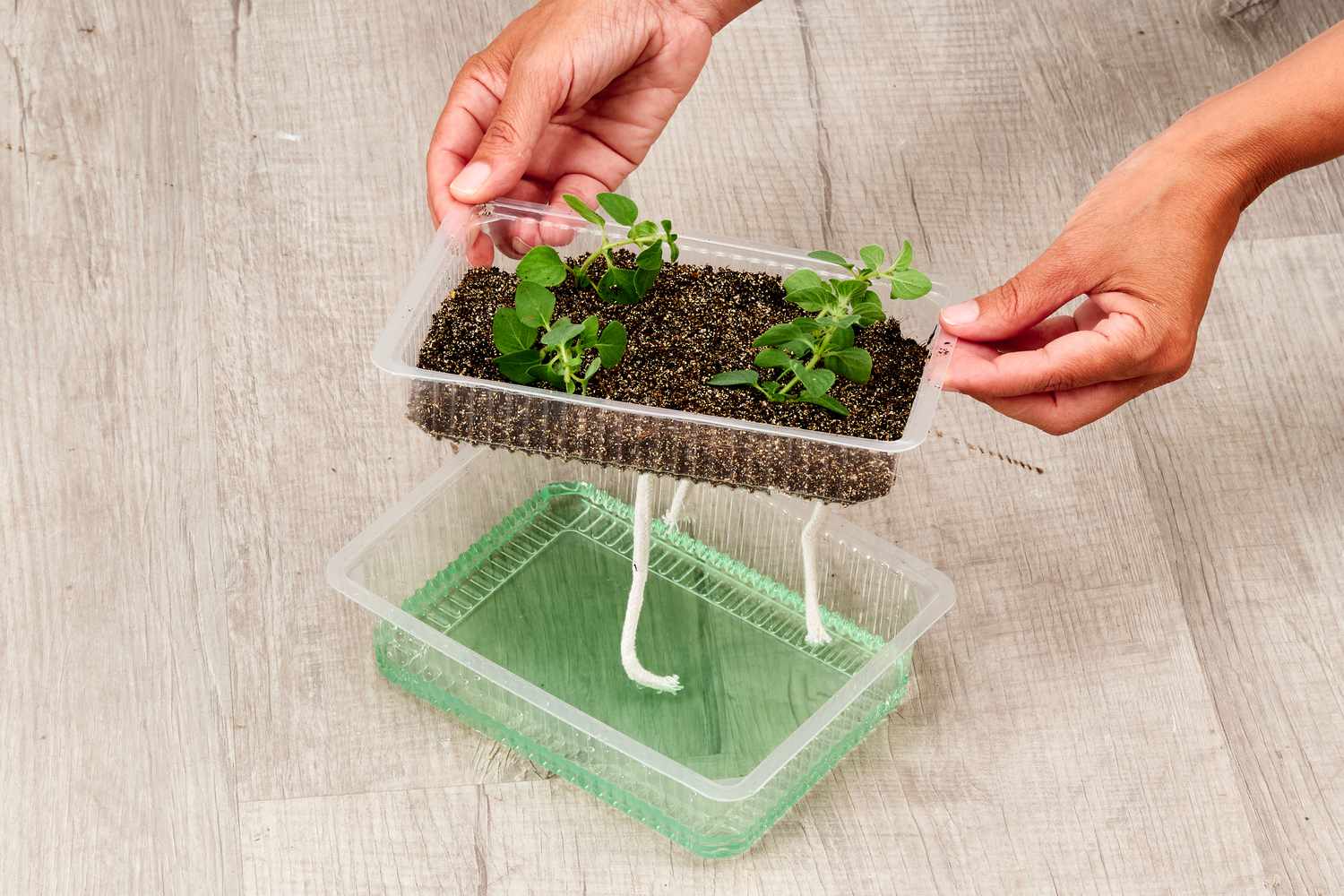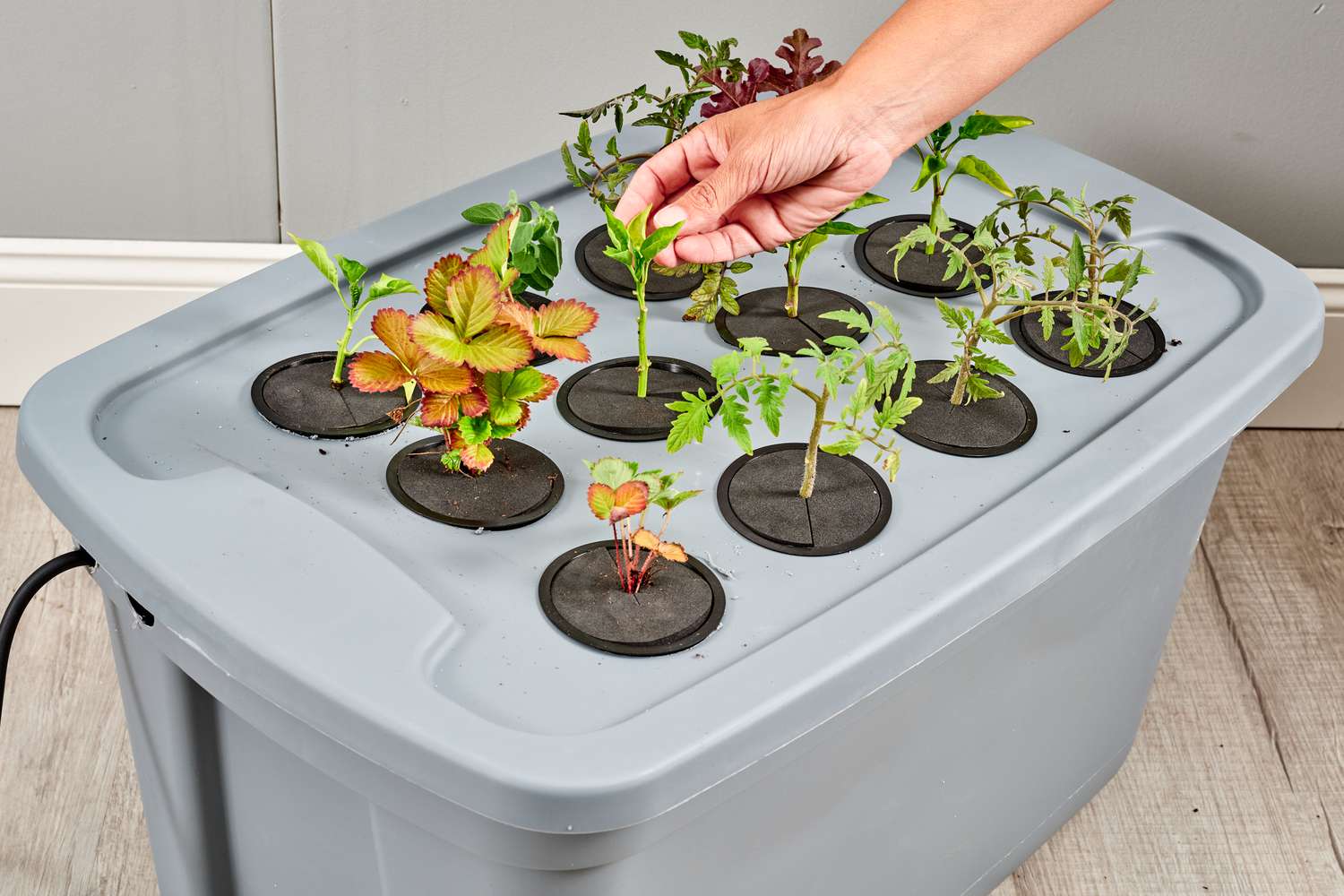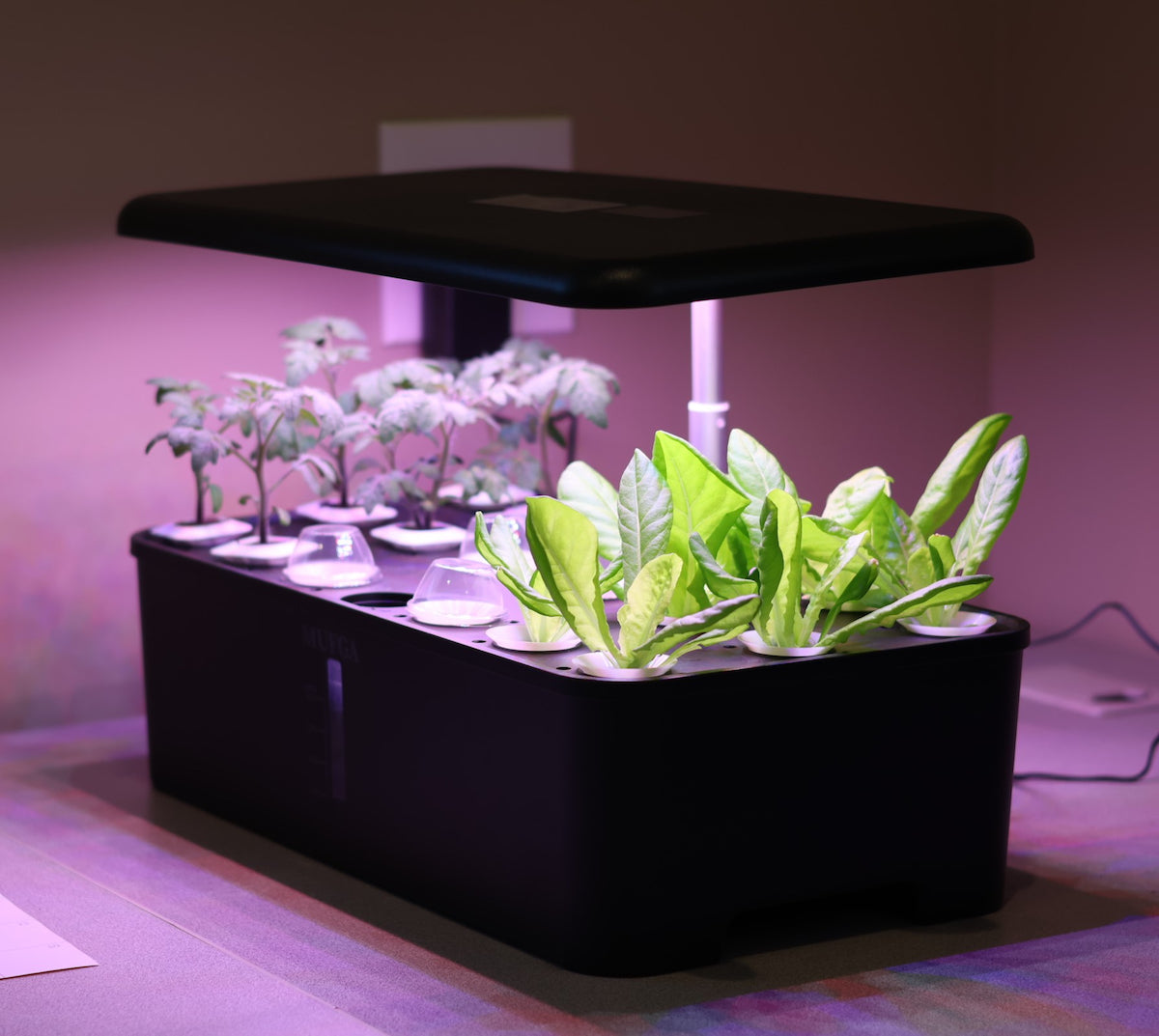To start a hydroponic garden for beginners, gather essential materials and choose a suitable setup. Assure optimal lighting, nutrient solutions, and monitoring systems for successful cultivation.
Hydroponic gardening is a method of growing plants without soil, using water and nutrient solutions instead. This technique is gaining popularity for its efficient use of resources and ability to grow plants in any environment. Whether you have limited space, poor soil quality, or want to experiment with different plant varieties, hydroponics offers a convenient and sustainable solution.
In this guide, we will walk you through the basic steps of starting a hydroponic garden as a beginner. By following these steps, you can enjoy the benefits of fresh, homegrown produce year-round. So, let’s get started on your hydroponic gardening journey!
:max_bytes(150000):strip_icc()/GettyImages-1134349969-01bc03cf4fd94023b07a47266f232e64.jpg)
Credit: www.treehugger.com
Choosing The Right Hydroponic System
Discover the perfect hydroponic system to kickstart your beginner’s garden. With a wide range of options available, find the ideal setup that suits your needs and helps you grow plants effectively without soil.
Consider Your Space
When choosing the right hydroponic system for your garden, the first thing you need to consider is the available space. Whether you have a small balcony, a backyard, or an indoor area, there is a hydroponic system that can fit your space requirements.
For those with limited space, vertical hydroponic systems are a great option. These systems allow you to grow plants vertically, maximizing the use of the available space. You can easily mount these systems to a wall or hang them from the ceiling. Not only do they save space, but they also create an aesthetically pleasing display.
On the other hand, if you have a larger area, you might consider a horizontal hydroponic system. These systems utilize tables or benches to support the plants and their nutrient solutions. They are suitable for growing a wide variety of plants and offer easy accessibility for maintenance and harvesting.
Understand Different Types Of Hydroponic Systems
Now that you’ve considered your space, it’s time to understand the different types of hydroponic systems available. Each system has its own advantages and requirements, so it’s important to choose the one that best suits your needs.
1. Nutrient Film Technique (NFT): This type of system utilizes a thin film of nutrient solution that continuously flows over the roots of the plants. It allows for efficient nutrient absorption and oxygenation, making it ideal for fast-growing plants like lettuce and herbs.
2. Deep Water Culture (DWC): In this system, the plant roots are immersed in a nutrient-rich solution. An air pump is used to provide oxygen to the roots. DWC is simple to set up and maintain, making it a popular choice for beginners.
3. Ebb and Flow: Also known as flood and drain, this system periodically floods the plant roots with nutrient solution before draining it away. This cycle helps to oxygenate the roots and prevent waterlogging. Ebb and Flow systems are versatile and can be used with various grow mediums.
4. Drip System: In a drip system, a drip line delivers a slow and steady supply of nutrient solution to the plant roots. This controlled delivery method allows for precise nutrient distribution and reduces water waste. Drip systems are suitable for a wide range of plants.
Remember, each system has its own pros and cons, so it’s essential to research and choose the one that matches your gardening goals and skill level. Take into account factors such as the types of plants you want to grow, the amount of time and effort you can invest in maintenance, and your budget.
Selecting The Ideal Plants For Hydroponics
When starting a hydroponic garden, selecting the right plants is crucial for success. Here are some important considerations to keep in mind while selecting the ideal plants for hydroponics.
Research Suitable Plant Varieties
Before starting your hydroponic garden, it’s essential to research the suitable plant varieties that thrive in a hydroponic system. Look for varieties that are known for their ability to grow well in water-based environments. Consider plants like lettuce, herbs, tomatoes, peppers, and strawberries which are popular choices for hydroponic cultivation.
Consider Plant Requirements
It’s important to carefully consider the specific requirements of the plants you intend to grow. Take into account factors such as light intensity, temperature, nutrient needs, and space considerations. Some plants may have specific pH level requirements and may need additional support structures as they grow. Ensure that you select plants that align with the available space and resources in your hydroponic system.
Preparing And Setting Up Your Hydroponic Garden
Starting a hydroponic garden as a beginner is easier than you think. Learn the basic steps to prepare and set up your own garden without soil, and enjoy the benefits of growing plants efficiently and sustainably.
Preparing and Setting Up Your Hydroponic Garden Starting a hydroponic garden may seem daunting for beginners, but with the right knowledge and preparation, it can be a rewarding and sustainable way to grow your own plants. In this section, we will walk you through the essential steps to prepare and set up your hydroponic garden. This includes gathering the necessary equipment and supplies, as well as creating a suitable environment for your plants to thrive.Gather Essential Equipment And Supplies
Before diving into hydroponic gardening, it’s important to gather the essential equipment and supplies to ensure a successful start. Here’s a list of what you’ll need:- Growing System: Choose a suitable hydroponic system based on your preferences and available space. Some popular options include Deep Water Culture (DWC), Nutrient Film Technique (NFT), and Ebb and Flow.
- Growing Medium: Select a growing medium that provides support for your plants while allowing their roots to access necessary nutrients. Options include perlite, vermiculite, coconut coir, and rockwool.
- Water Reservoir: Invest in a reservoir that can hold your nutrient solution. Ensure it is lightproof to prevent the growth of algae.
- Nutrient Solution: Purchase a high-quality hydroponic nutrient solution specifically formulated for the different growth stages of your plants. This will provide them with the essential nutrients they need to thrive.
- pH Kit: Test the pH level of your nutrient solution regularly using a pH testing kit. This will help you maintain the optimal pH range for your plants, ensuring proper nutrient absorption.
- pH Adjusters: Have pH adjusters on hand to regulate the pH level of your nutrient solution when necessary. These can be acids or bases, depending on whether you need to increase or decrease the pH.
- Lighting: Install appropriate grow lights to provide your plants with the necessary light energy for photosynthesis. LED lights are energy-efficient and widely used in hydroponic setups.
- Air Circulation: Ensure proper air circulation in your grow area to prevent the buildup of heat and humidity. This can be achieved through fans or ventilation systems.
- Seeds or Seedlings: Choose the plants you want to grow, either from seeds or young seedlings. Make sure they are suitable for hydroponic cultivation.
- Labels and Markers: Use labels or markers to identify your plants and keep track of their growth progress, especially if you’re growing different types.
Create A Suitable Environment For Plants
To maximize plant growth and ensure a healthy hydroponic garden, it’s crucial to create a suitable environment. Here’s what you need to consider:- Temperature: Maintain optimal temperature levels for your plants, typically between 68 to 78 degrees Fahrenheit (20 to 25 degrees Celsius). Use a thermometer to monitor and adjust as needed.
- Humidity: Keep humidity levels between 40% to 60% to prevent excessive moisture buildup, which can lead to mold and other plant diseases. Use a hygrometer to measure and regulate humidity.
- Air Quality: Ensure good air quality by providing proper ventilation and air circulation in your growing area. Carbon dioxide (CO2) supplementation might be needed for optimal plant growth.
- Lighting Schedule: Set up a consistent lighting schedule for your plants, mimicking their natural light cycle. Most plants require around 12 to 16 hours of light per day.
- Prevent Light Leaks: Inspect your grow area for any light leaks during the dark period, as this can disrupt plant growth. Use lightproof curtains or coverings if necessary.
- Cleanliness: Maintain a clean and sanitized growing environment to prevent the spread of pests and diseases. Regularly clean your equipment, refill nutrient solutions, and remove any dead plant material.
:max_bytes(150000):strip_icc()/beginners-guide-to-hydroponics-04-4c8471edd6dc49d0a83e9f84e4dd8cf1.jpg)
Credit: www.thespruce.com
Nutrient Management In Hydroponics
A crucial aspect of hydroponic gardening is managing the nutrients that plants need to thrive. In traditional soil gardening, plants obtain their nutrients from the soil; however, in hydroponic systems, plants are grown in a nutrient-rich water solution. Understanding how to properly manage these nutrients is essential for the success of your hydroponic garden. In this section, we will explore the importance of essential plant nutrients as well as how to balance and adjust nutrient levels to ensure optimal plant growth.
Understanding Essential Plant Nutrients
Plants require a variety of essential nutrients to grow and flourish. These include macronutrients, which are needed in large quantities, and micronutrients, which are required in smaller amounts. These essential nutrients can be provided to plants in a hydroponic system through a nutrient solution.
The primary macronutrients that plants need are nitrogen (N), phosphorus (P), and potassium (K). Nitrogen is responsible for promoting plant growth and the development of healthy foliage. Phosphorus aids in root development and flower production, while potassium helps regulate important plant functions and improves overall plant health.
In addition to these macronutrients, plants also require several micronutrients, such as calcium (Ca), magnesium (Mg), and iron (Fe). These nutrients play a critical role in various physiological processes within the plant, including photosynthesis and enzyme activation.
Balancing And Adjusting Nutrient Levels
In hydroponics, it is vital to maintain the proper balance of nutrients in your solution to ensure optimal plant growth and prevent nutrient deficiencies or toxicities. Testing the nutrient levels of your solution regularly is crucial to ensure that your plants are receiving the nutrients they need.
One way to monitor and adjust nutrient levels is by using electrical conductivity (EC) and pH meters. EC meters measure the concentration of nutrients in the water, while pH meters determine the acidity or alkalinity of the solution. A suitable pH range for hydroponic systems is typically between 5.5 and 6.5.
If you find that the nutrient levels are too high or too low, you can make adjustments by either diluting the solution with water or adding more concentrated nutrients. It’s important to follow the manufacturer’s instructions for the specific nutrient solution you are using and to make gradual adjustments to avoid sudden changes that can shock the plants.
Regularly monitoring and adjusting nutrient levels will help maintain optimal conditions for your hydroponic plants, ensuring they have the nutrients they need to grow healthy and strong.
Maintaining And Troubleshooting Your Hydroponic Garden
Discover the essentials of starting and maintaining a hydroponic garden with this beginner’s guide. Learn about key troubleshooting tips and strategies to keep your garden thriving. Whether it’s understanding nutrient solutions or preventing common issues, you’ll gain valuable insights to kickstart your hydroponic journey.
Maintaining and Troubleshooting Your Hydroponic Garden Monitoring pH and EC Levels To maintain a thriving hydroponic garden, regular monitoring of pH and EC levels is crucial. Keep a close eye on the pH level of the nutrient solution using a digital pH meter, aiming for a range of 5.5 to 6.5 for most plants. Similarly, monitor the EC (Electrical Conductivity) level, which indicates the nutrient concentration in the solution. Adjust the levels accordingly to ensure optimal nutrient uptake by the plants. Preventing and Managing Plant Pests and Diseases When cultivating plants in a hydroponic system, vigilant pest and disease management is essential. Implement preventive measures such as maintaining proper hygiene, using pest-resistant varieties, and deploying beneficial insects. Regularly inspect plants for any signs of pest infestation or disease, and swiftly address any issues to prevent their spread. Employ organic pest-control methods and consult gardening resources for effective treatments. Incorporate these practices into your hydroponic gardening routine to ensure the health and vitality of your plants. Regular monitoring of pH and EC levels, along with proactive pest and disease management, will contribute to a successful and flourishing hydroponic garden.
Credit: www.squaremilefarms.com
Conclusion
Starting a hydroponic garden may seem daunting, but with the right knowledge and resources, it’s an achievable endeavor. By understanding the basic principles and investing in the necessary equipment, you can embark on a successful hydroponic gardening journey. With patience and dedication, you’ll soon be enjoying the benefits of growing your own fresh and healthy produce at home.








